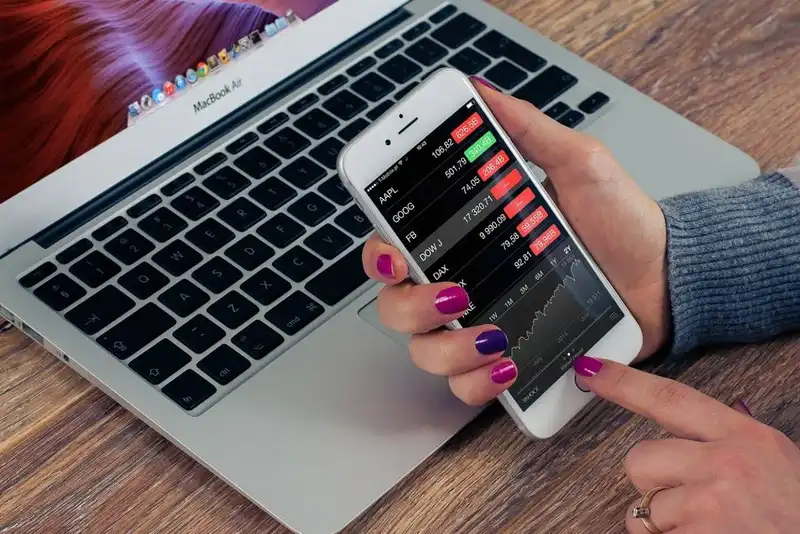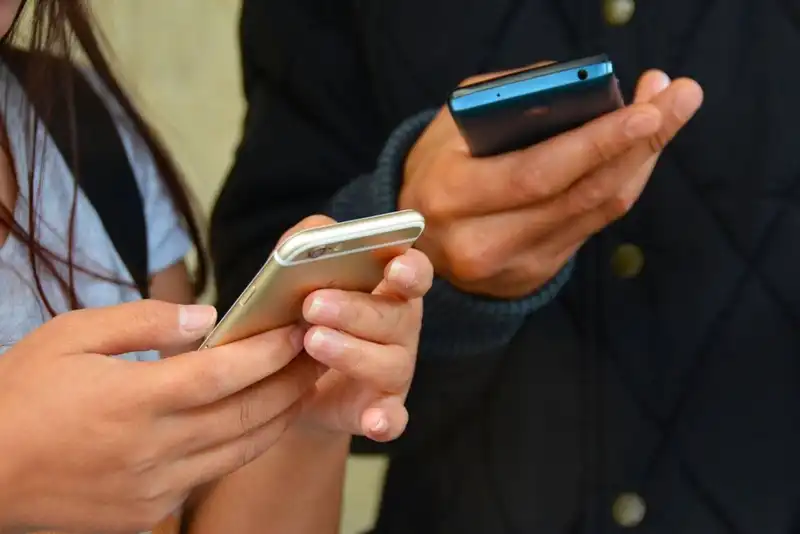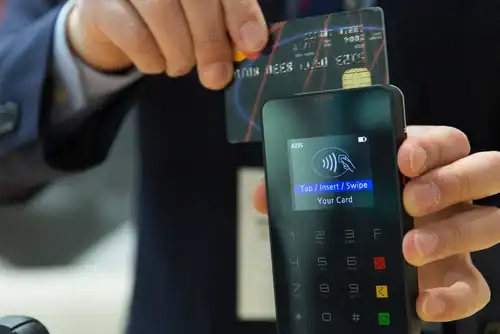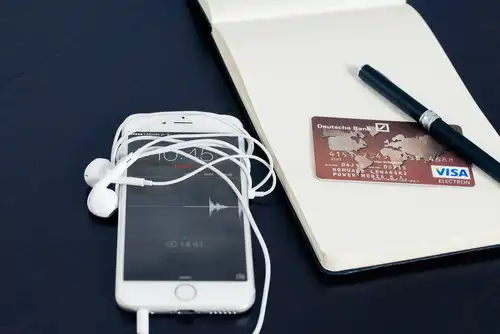What are mobile payment systems ?
Mobile payments are like credit card and debit card payments minus the cards. Instead, mobile payment systems use software apps loaded onto Internet-connected mobile devices to conduct customer transactions.
restaurant point of sale
October 29, 2021

Mobile payments are like credit card and debit card payments minus the cards. Instead, mobile payment systems use software apps loaded onto Internet-connected mobile devices to conduct customer transactions.

Mobile payments are payments made for goods and services using a mobile device like a tablet or smartphone. The device has a payment app on it that is connected to an owner's bank account or credit card. To complete a transaction, users simply swipe their device near a scanner designed to process mobile payments.
The economy has been moving away from cash lately. Credit cards and debit cards are becoming a favorite way to pay for goods and services. New payment methods are being introduced; mobile payments are one of them.
Mobile payment systems like Zelle and Paypal are popular ways to send and receive money online. They're also used for online purchases. Increasingly, they're being used to make in-person purchases as well.
Mobile app purchases work the same as credit card or debit card purchases. However, instead of swiping a card, a customer swipes their mobile device near a specially configured card reader. This saves customers the trouble of having to carry around cash or credit cards.
There are several different ways to make mobile payments. These include QR codes, MST, mobile wallets, and mobile-to-mobile payments. In addition to Paypal and Zelle, other mobile payment app providers include Apple, Google, and Samsung.
A lack of mobile pay terminals is one of the challenges facing mobile payment users. The good news is, this situation is changing. More and more retailers are realizing the benefits of accepting mobile payments.

How exactly does a mobile payment system work? The process is pretty straightforward. It's not much different than using a credit card.
The customer begins by downloading a payment app onto their smartphone or tablet. They create an account and link it to a credit card or bank account. The customer can use the app to send or receive money or make online and in-person payments.
Why are so many consumers using mobile payment methods? One reason is they're so easy. Customers don't need a wallet with cash or cards to make purchases; all they need is a mobile device.
In order to make in-store purchases, the retailer needs a POS terminal that accepts mobile payments. Most POS terminals can be configured to accept mobile payments. A merchant service provider can supply you with more information about getting set up for mobile payments.
When the customer is ready to pay for their purchase they hold their device close to a mobile payment-enabled POS terminal. The mobile POS terminal scans and encrypts the data for transmission.
The customer's bank receives the information and will either approve or deny the transaction. As with credit cards, the mobile payment transaction process only takes a few seconds. Mobile payments are settled the same way as credit cards.

Traditional payment systems are slow, expensive and inconvenient.
Mobile payment systems are the future of financial transactions.

The term "mobile payment" doesn't apply to one specific form of payment. Rather, it's an umbrella term for any payment made using a mobile device. Here are a few of the different kinds of mobile payment systems-

For consumers, there are many advantages to using mobile payment systems. For one thing, they don't have to carry around credit cards or cash. They can make a payment or transfer funds instantly using a mobile phone or tablet.
But what are the advantages for a merchant? Are accepting mobile payments worth the investment? The truth is, there are many benefits for a mobile payment-friendly business.
Small businesses like restaurants, can realize many benefits from accepting mobile payments. For one thing, mobile payments can greatly streamline the checkout process. Integrating a mobile payment system into a restaurant's POS system, can increase sales and create a better customer experience.
For one thing, mobile transactions only take a few moments to complete. A customer simply swipes their phone near a scanner or contactless reader. A mobile transaction is as quick and easy as a credit card payment.
Because mobile payments are just that, they can be made from anywhere. Customers don't have to stand in line; they can simply pay from their mobile devices. This eliminates a lot of potential congestion at your POS terminal.
You even save time on printing receipts. When customers use a mobile payment system they don't require a printed receipt. They receive a text message or email listing the details of the transaction.

In the restaurant industry, cash is still used for a majority of purchases under $10. Cash is easy to use, doesn't come with any processing fees, and doesn't require an internet connection. However, it does have its drawbacks.
The problem is, cash isn't very secure. It's easily stolen, misplaced, or destroyed. In most cases, when cash is gone, it's gone forever and can't be replaced.
The more you expand your restaurant's non-cash payments options the less cash you'll have to have on hand. This makes your establishment less of a target for robbery and other crimes. In addition, you reduce the risks of incidents while taking the cash for deposit in a bank.
Mobile payments have many security features to protect users. Like credit card payments, mobile payments use advanced technology to protect consumers and merchants. This includes the encryption and tokenization of data.
Encryption is the process of encoding information. In the encryption process, the original data is converted into an alternate form of data called ciphertext. Only authorized parties are able to decipher an encryption code.
Tokenization is another way of securing data. In tokenization, customer data is encrypted into a unique transaction code that's only valid for a specific transaction. If your system is hacked, thieves will only be able to access the now worthless tokenized data.

Not all mobile payment systems are the same. Some are more convenient than others.
The convenience of mobile payments is often discussed, but what about the other advantages?

Here's the problem with running a cash-only restaurant. A customer comes in and wants to order two menu items. Then they realize they only have enough cash to afford one.
If the customer could use a mobile wallet or credit this wouldn't be a problem. But they can't - you only accept cash. You just missed a sales opportunity.
By increasing a customer's purchasing power, you increase sales. Credit cards and mobile payment systems greatly expand a customer's purchasing abilities. Their purchasing power is bound only by their credit limit.
Smart restaurants have figured this out. Looking for a way to increase sales? Accept as many forms of payment as possible.
Simply advertising the fact that you provide mobile payment services could be enough to increase sales. Like hanging a Visa sign in your window, letting people know you accept mobile payments builds trust. Remember, not all restaurants accept mobile payments; doing so could give you an edge over the competition.
Here's another interesting mobile payment fact you may not be aware of. Mobile payment processing fees are generally less expensive than credit card fees. This means you can potentially make more on a mobile payment sale than a credit card sale.

If you're like most restaurants, you occupy a highly competitive niche. You can only reduce prices so much, so how do you out-compete your rivals? You provide a better customer experience.
It's easy to create a better dining experience for your customers. First, you determine what your customers are looking for in a dining experience. Then you provide it.
Delivering an enjoyable customer experience is a sure way to attract new customers and keep your steady ones. Everybody knows this. But where do mobile payments fit in?
The whole point of accepting a variety of payment methods is to improve the customer experience. The simpler the payment method the better. And it's hard to get much simpler than a mobile payment method.
Customers like the ease and convenience of using mobile payment methods. They don't have to carry a wallet or cash around, all they need is their mobile device. And mobile payments only take seconds to process.
In addition, mobile payments can be made from anywhere. Customers don't have to stand in line to pay. They can even pay from their tables.
There are other ways mobile payments can create a better customer experience. Mobile payment methods give you the ability to set up loyalty programs, customer discounts, etc. These are a great way to reward loyal customers and keep them coming back.
Giving your customers what they want is what the restaurant business is all about. The better you're able to do this, the more successful your restaurant will be. Accepting mobile payments at your restaurant may be just the thing you need to edge out the competition.
Mobile payment systems work like credit card or debit card payments. However, instead of a card, mobile payment systems use an Internet-connected mobile device with a payment app to conduct transactions.
The three types of mobile payments are mobile wallets, wireless payments, and contactless payments. Mobile wallets are apps that you download on your phone that let you store your credit cards, debit cards, loyalty cards, and other payment methods. The most popular mobile wallet is Apple Pay. Wireless payments are the ability to pay without using your credit card or cash. You can be in a store or online, and your credit card is charged without you needing to enter any information. Contactless payments are the ability to touch your mobile device to pay for goods. The purchase amount is automatically charged to the credit card you have on file for the app.
There are many different factors to consider when deciding which one is best for you. These are things like security, convenience, fees, and more. Do some research to determine which mobile payment system is best for your restaurant.

2023-02-23
Read More

